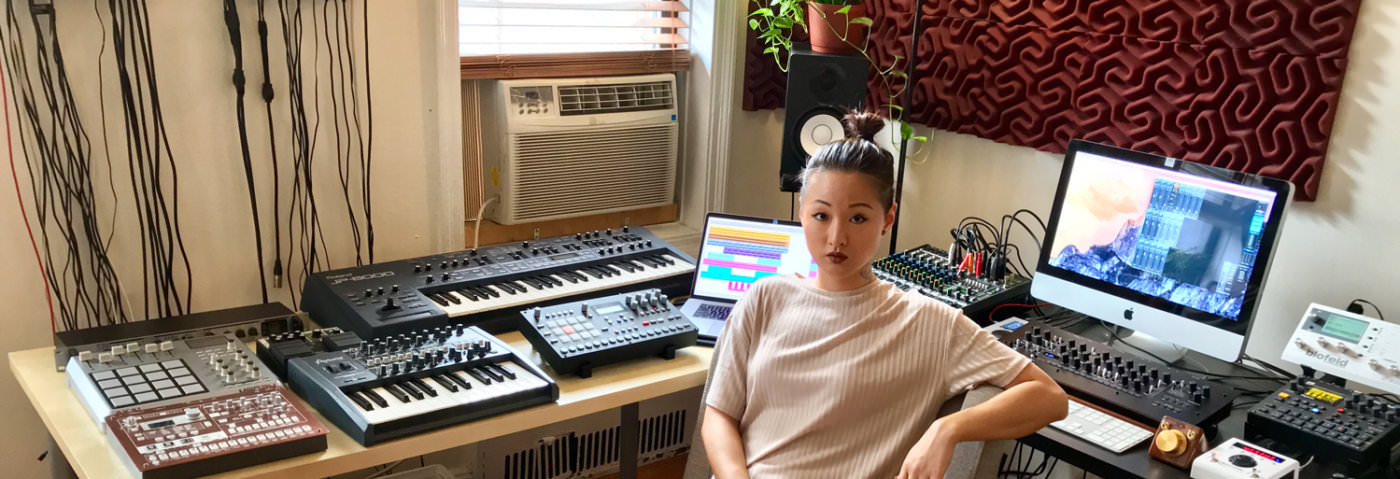“The environment here is very sunny and airy, but my music is usually dark and dense – a contradiction I embrace.” We asked Dusk Notes founder, Soramimi to show us around her New York studio.
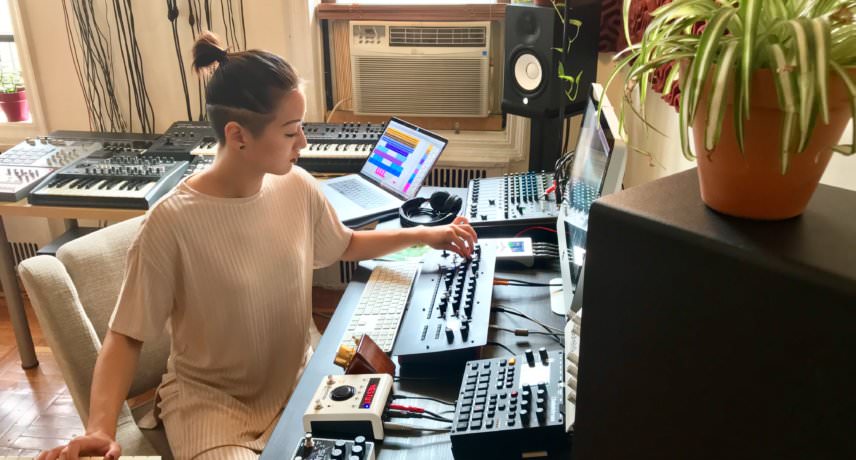
Soramimi
Welcome to my studio! Itʼs located right in my home, in a remote neighborhood on the outskirts of NYC. I share it with my partner and fellow producer Cory James, whom I also live with and run our label Dusk Notes with.
Iʼm a homebody who needs lots of space and time alone to work independently, so having easy and private access at all times is important. The location is ideal because itʼs far from the noise and distractions of the cityʼs more congested cultural hubs, and surrounded by a quiet bay and lots of open, green spaces. I also need things to be tidy, free of clutter, and arranged “just so,” so having controlled ownership of this space in the sanctuary of our home works best for me.
The studio is integrated into a centered, peaceful sense of shelter that I find conducive to my creativity and freedom. Not quite the pure gear fetishist others may think I am, I consider my pieces of kit as tools to help channel and fulfill my sonic vision. The vision and the music is most important. So the equipment used here is usually in flux. I like to purge, so instead of hoarding gear I no longer feel connected to, Iʼll usually sell something before making room for new pieces. What you see today may not be how it will look months from now.
My studio and equipment have certainly evolved over the years, but I appreciate how compact it still feels. Much of that was inspired by my live PA setup. Itʼs not always obvious, but after composing and rehearsing original music for gigs; breaking down the studio; transporting the equipment to and from venues (which poses its own set of anxieties); then finally assessing the gear for any damage and rebuilding the studio again afterwards – the whole process can feel destabilizing, labor-intensive and stressful. This gave me an opportunity to simplify my live PA setup into something more convenient to travel with, which just happened to influence a more streamlined, systemized workflow here in the studio, as well.
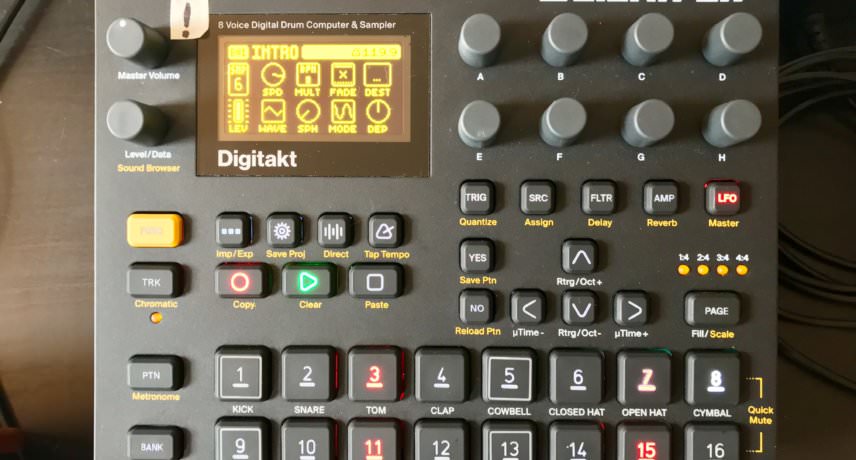


Elektron Digitakt
As a big fan of both efficiency and intuitive interfaces (and why I prefer producing tactile and hands-on with hardware, over clicking around in software), I used to find heavy sub-menu diving absolutely dreadful, especially when you have to scroll and press through deep layers and layers of parameters just to get to the ones you want.
With Elektron instruments, I had to just shut up and get over it because the sound engine and feature capabilities are incredibly worth it. Thereʼs a reason Elektron instruments are so widely coveted and held in high esteem. Iʼm happy I became familiar with the Digitakt first before the Analog Rytm because it really helped shorten the learning curve with the latter. I do find the Rytm to have way more punch to be honest, so the ideal situation would be to use the two machines together, but that all depends on the genre of music Iʼm creating.
Much of the swinging, skittering, polyrhythmic percussion sounds you hear in my track “Diatoms” (forthcoming on Monday Offʼs Various Artist Vol.3) was created on this beautiful machine. Itʼs physically compact, which I love (especially when I use it as part of my live PA setup), and itʼs easy to integrate with my other instruments, even as just a sequencer.
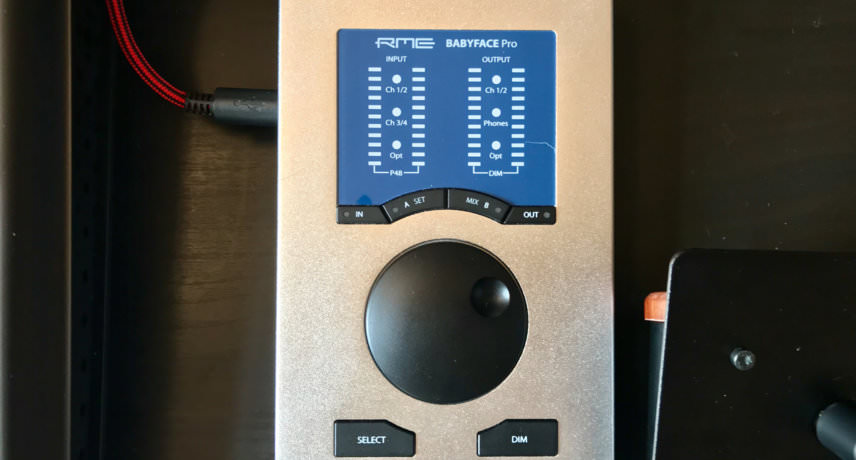


Babyface Pro – RME
If youʼre a recording artist with some decent quality outboard gear, youʼre doing a huge disservice to yourself if youʼre not also taking your audio interface into consideration.
My very first beginner audio interface was a Focusrite Scarlett 2i2, then a Mackie ProFx12 mixer doubling as one. They worked with my limited budget when I was younger, but honestly they were frustrating, and once I eventually upgraded to quality audio interfaces and heard the difference in the recording quality, I was just upset that I didnʼt make the switch sooner.
This solid piece provides clean, clear, balanced, precise sound with no noise nor latency issues. It also comes with TotalMix software that you can use for routing and mixing. I strongly believe this to be one of the most important investments any recording artist or sound designer can make for their studio.
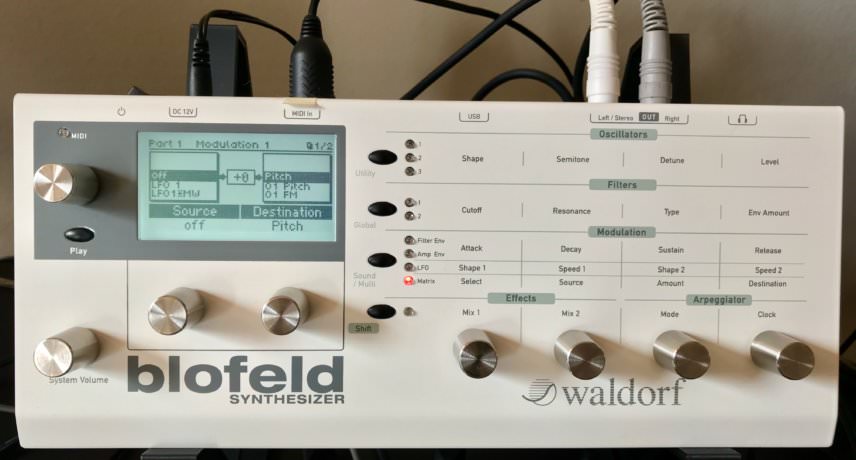


Waldorf Blofeld
This is a powerful polyphonic staple piece, especially for my sound design projects.
Itʼs got a wide scope of abilities and parameters, and affords a deep variety of complex sonic environments, textures and moods. Itʼs my Swiss Army knife.
I always run it through external effects processors. The highly resonant and filtered swarming synths you hear in my track “Diatoms” were made on this machine. It can get buggy at times, but itʼs still worth it. I love running it through my Digtaktʼs sequencer to get even more possibilities and life out of it, especially when using it as part of my live PA setup.
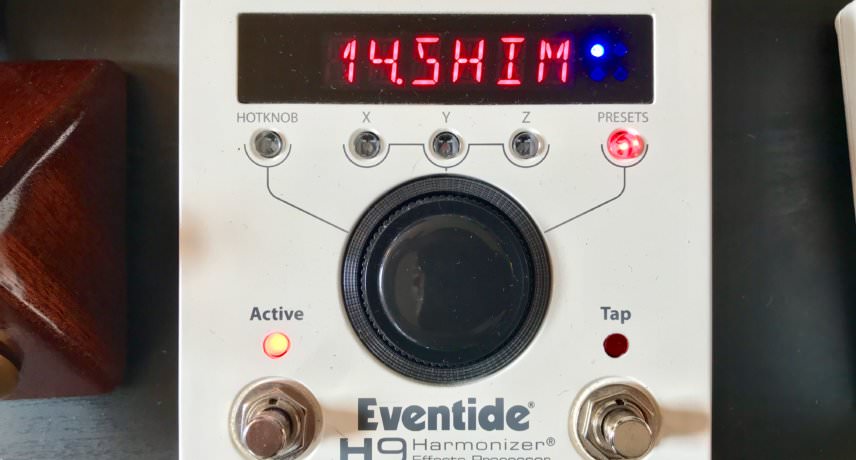


Eventide H9 Harmonizer
This is also a favorite go-to piece and I use it for all of my sound design and recording projects, and live PA performances. Itʼs got all of Eventideʼs iconic effects and rich sonic quality, and itʼs very versatile. You could probably run the dullest sounding machine through this, and it will make the sounds big, spatial, warm, thick, chaotic, or whatever quality youʼre going for – You can trust that it will add vitality to everything.
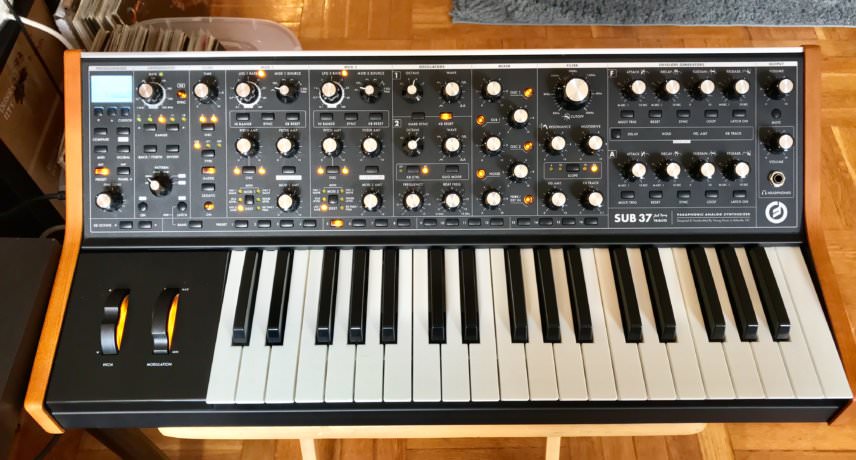


Moog Sub 37
I am in love with Moogʼs robust, commanding, vigorous, crunchy sounds and its iconic filter. Beastly sounds.
This piece has all that, as well as more versatile, modern sounds. Its interface is also very elegant and navigable. Iʼve also been using it as a controller for my other modules. I used to bring this hefty thing out with me to my live PA gigs, which turned out to more inconvenient and risky than I was willing to let on – These days, I will record the patches I create on this into Ableton software and use a midi controller to trigger and process FX if I want to feature Moog sounds in my live show.
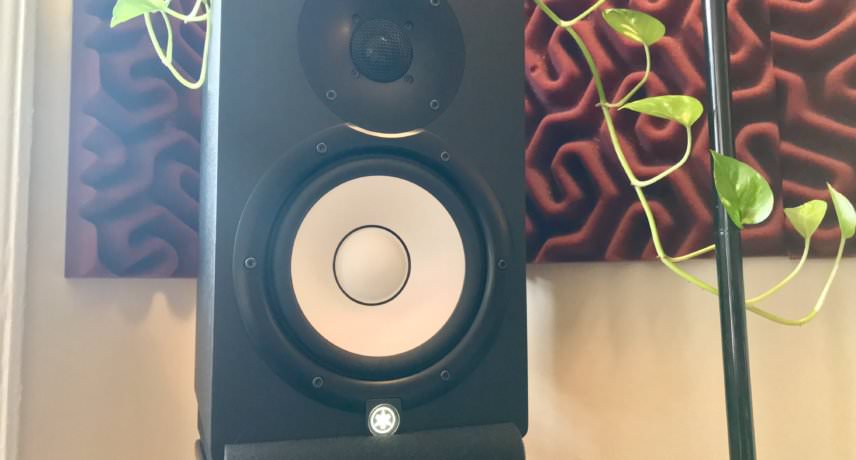


Yamaha HS7
These monitors do a damn fine job providing flat, clean, transparent and accurate sound. Iʼve had to move a lot within these past ten years, and would need to change monitors more frequently to accommodate the different roomsʼ sizes and physics.
The previous monitors I was using before these were Event TR8, which ended up bringing about too much audio fatigue, low end, distortion and color – especially not ideal for smaller spaces. The monitors I had before those were Yamaha HS5 and it was a no-brainer to return back to that series, and upgrade the size to accommodate the physics of this current space.
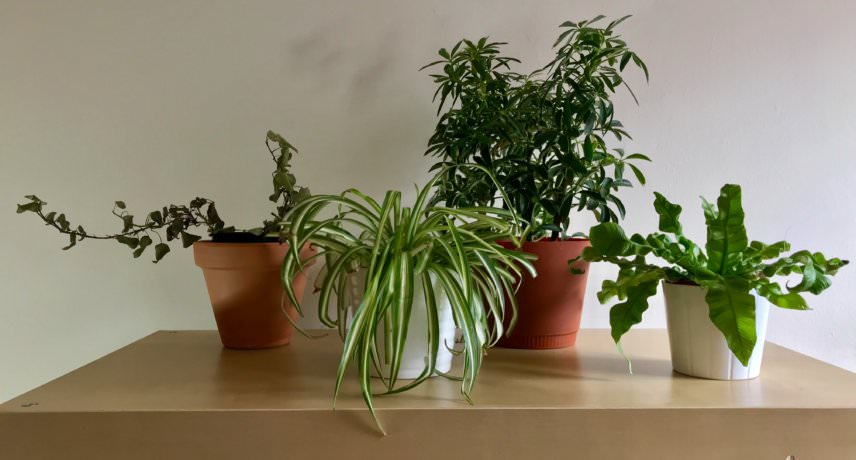


Plants
Gone are the days when I was much younger, aggressively and obsessively spending 12-hour marathon studio sessions in the dark with no breaks, sleep, nor food.
Nowadays, I get audio fatigue and burn out easily so I make sure each studio session is full of intent and focused purpose, and I allow for frequent breaks. Iʼve had to temper my intensity and workaholic habits. I look out for my health more. This means consciously manipulating my environment to support that. Silence can be counterintuitively helpful. A comfy studio chair is also a game-changer. I surround my studio with as much sunlight as possible, and plants, too. Itʼs funny because the environment here is very sunny and airy, but my music is usually dark and dense – a contradiction I embrace.
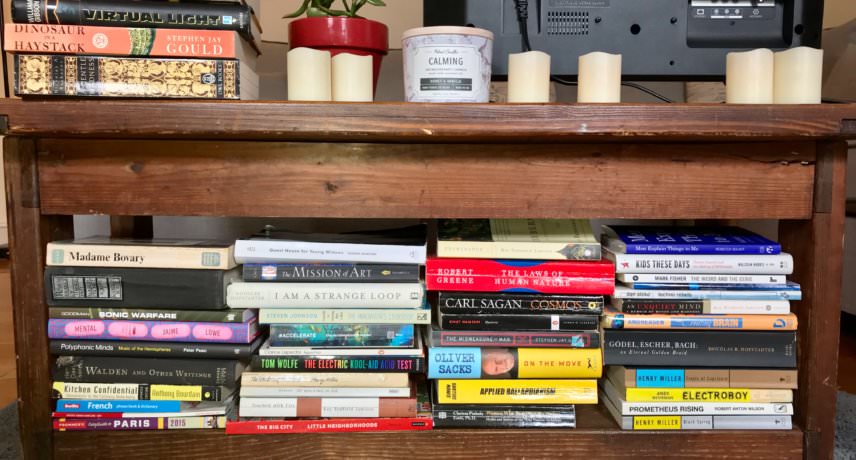


Books
A sense of sublime escape is my not-so-guilty pleasure. This need transcends music. So I read a lot of books and watch a lot of films, too.
Creative incubation periods are important to me. Sometimes I need to take weeks, even months completely away from music and immerse myself in other media and disciplines, whether that be painting, writing, or martial arts and combat sports. My hands are in many baskets and I wouldnʼt have it any other way. Candles help defuse my overactive nervous system – these LED ones here last forever. I make sure to give myself space and time for all of these things so I can feel refreshed, sure of my purpose and ready to accomplish my next sound project.
Beady eyed readers will notice “Sonic Warfare’ on Somami’s shelf. In Sonic Warfare, author Steve Goodman explores the sound, affect and the ecology fear. Excellent book and available from Attack priced at £18.95.
Monday Off’s Various Artists Vol.3 (including Soramimi’s latest single “Diatoms”) is out September 30th. Find her on Facebook, Instagram & Soundcloud.
